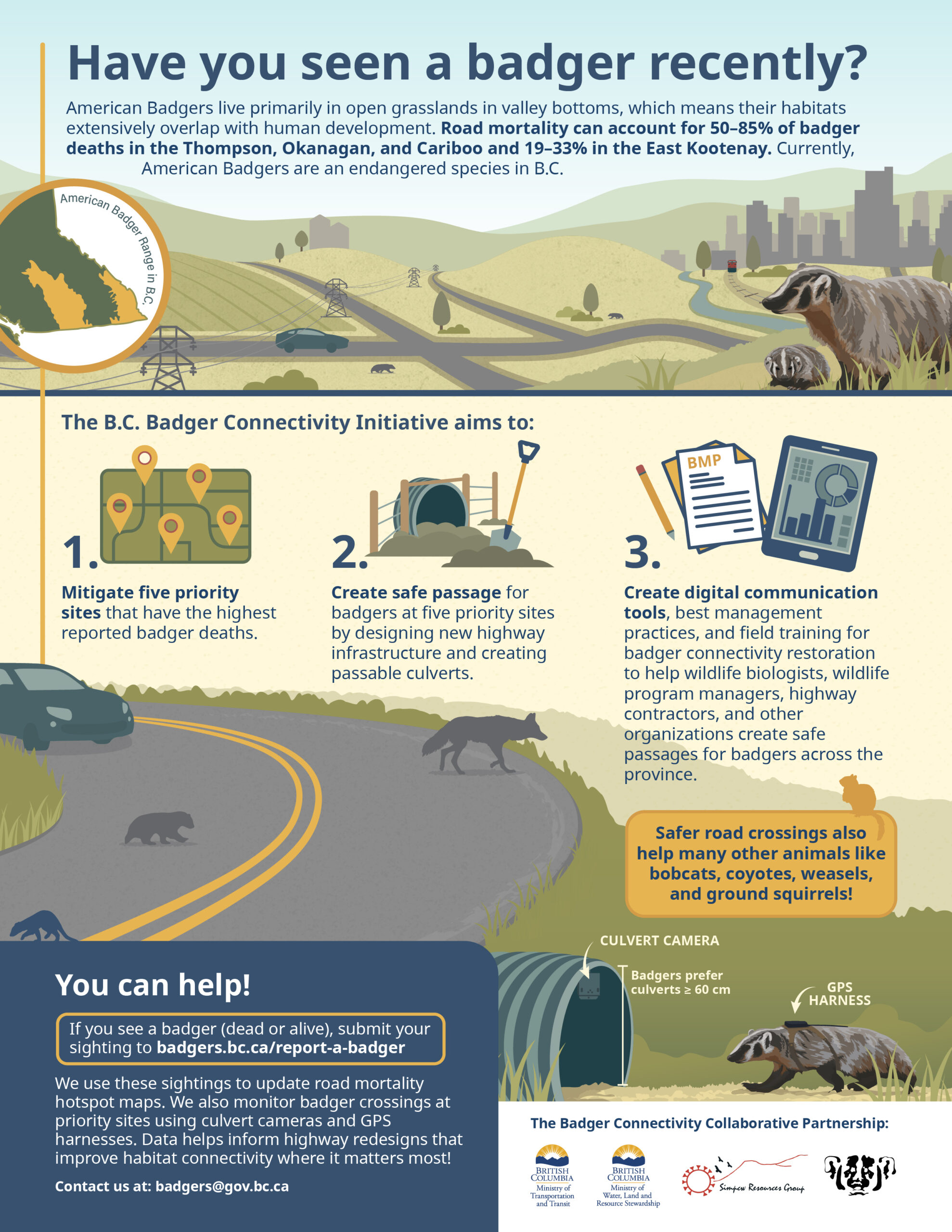Help Spot and Save Endangered Badgers in B.C.’s Southern Interior

As summer travel season ramps up, so too does the risk to one of B.C.’s most endangered species—the American Badger, known in Secwepemúl̓ecw as Sq̓ítxleqs. These elusive animals live mainly in open grasslands and valley bottoms, where roads and development increasingly threaten their survival. In regions like the Thompson, Okanagan, and Cariboo, road mortality accounts for up to 85% of known badger deaths.
Why This Matters
American Badgers (Sq̓ítxleqs) are a keystone species in B.C.’s grassland ecosystems. They help manage rodent populations and support healthy habitats for many other species. Improving safety for badgers also supports safer movement for other wildlife, such as bobcats, coyotes, weasels, and ground squirrels.
And the time to act is now. Summer brings more wildlife movement—and more vehicles on the road. That makes public sightings especially important for those working to protect these animals.
What’s Being Done
The B.C. Badger Connectivity Initiative is working to reduce badger deaths and restore habitat connectivity.
Led by the Ministry of Water, Land and Resource Stewardship (WLRS), with support from multiple First Nations and the Ministry of Transportation and Transit (MoTT), the initiative focuses on five high-priority areas:
1. Reducing badger road mortality in identified high-risk, or hotspot areas
2. Improving habitat connectivity using culverts and highway infrastructure
3. Developing digital tools and training to support planners and field staff
4. Integrating Indigenous knowledge and local stewardship
5. Enhancing data-sharing and planning across jurisdictions
Simpcw First Nation has been leading badger conservation efforts within Simpcwúl̓ecw (Simpcw Territory) since 2021, including habitat monitoring, mitigation planning, and community engagement. This work reflects their inherent tmicw (responsibility/stewardship) for the land. WLRS leads the provincial telemetry program, while Nations and regional partners are contributing to shared goals across the badger’s range.
“Sightings from people on the land are one of the most important tools we have,” says Ceryne Staples, who leads the badger conservation program within Simpcwúl̓ecw. “These reports support our work, contribute to provincial tracking efforts, and help protect badgers and the places they rely on.”
Take Action: Report Badger Sightings
If you see a badger (dead or alive), please report it at: badgers.bc.ca/report-a-badger
These reports feed directly into a provincial database that supports real-time fieldwork and long-term planning. Submitting is quick—and photos or location info are especially valuable.
For more information or to request outreach materials, contact: badgers@gov.bc.ca.

